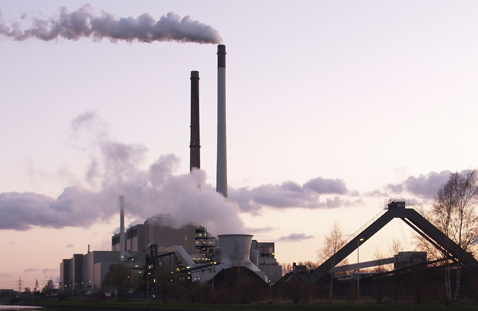
In a bid to tighten the pollution norms for thermal power plants and also restrict their water usage, the Ministry of Environment, Forest and Climate Change recently issued a draft notification for amending the Environment (Protection) Rules, 1986. The Environment (Protection) Amendment Rules, 2015, will come into force on the date of their publication in the official gazette.
The Environment (Protection) Amendment Rules, 2015, require all TPPs with Once Through Cooling to install cooling tower and ensure that specific water consumption does not exceed 4 m3/MWh within two years period from the date of notification. All existing CT-based plants are required to reduce specific water consumption to a maximum of 3.5 m3/MWh during this period. New plants installed after January 1, 2017, have to restrict their specific water consumption to 2.5 m3/MWh and achieve zero liquid discharge.
As per the emission standards laid down for TPPs in the new rules, those installed before December 31, 2013, are required to limit the emission of particulate matter to 100 mg/Nm3, Sulphur dioxide to 600 mg/Nm3 in case of units smaller than 500 MW capacity and 200 mg/Nm3 in case of units with 500 MW and above capacity, Oxides of nitrogen to 600 mg/Nm3 and Mercury to 0.03 mg/Nm3 for units with capacity of 500 MW and above.
For TPPs installed after 2003 till December 31, 2006, the emission limits are 50 mg/Nm3 for particulate matter, 200 mg/Nm3 for SO2 in case of units with capacity of 500 MW and above, 300 mg/Nm3 for NOx and 0.03 mg/Nm3 for Hg. TPPs installed from January 1, 2017, will have to limit the emissions of particulate matter to 30 mg/Nm3, SO2 to 100 mg/ Nm3, NOx to 100 mg/Nm3 and Hg to 0.03 mg/Nm3. All TPPs including those that have been given environmental clearance and currently under construction have to meet the emission standards within two years from the date of notification.
The MoEF has sought comments on the draft notification till June 13, 2015, after which it will be taken up for consideration.
According to the New Delhi-based Centre for Science and Environment, the coal-based power sector currently accounts for approximately 60 per cent of particulate emissions, 45-50 per cent of SO2 emissions, 30 per cent of NOx emissions and more than 80 per cent of mercury emissions out of the total pollution from the sector. At present, there are no standards in the country to curb emissions of SO2, NOx and mercury. Even the standards that exist for particulate matter are considered quite lax compared with global norms.
The CSE said that the new standards proposed in the draft notification were expected to cut particulate emissions from new plants by 25 per cent; SO2 emissions by 90 per cent, NOx emissions by 70 per cent and mercury emissions by 75 per cent compared with the existing state-of-the-art plants.











